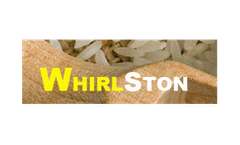Rice Paddy Articles & Analysis
20 articles found
Early Sustainable Aquaculture Aquaculture traces its roots back thousands of years. Local farmers and fishers have cultured fish, mollusks, and crustaceans for generations, using traditional methods and local ingenuity to improve their living conditions through low-intensity aquaculture. Though these systems produced low yields, production was sufficient to meet the needs of local residents. ...
ByVinnbio
The Growth Story Prior to the NAFTA agreement, U.S. rice into Mexico faced bound (maximum allowable) tariffs of 9 percent on paddy rice and tariffs of 45 percent on husked, milled and broken rice. ...
Rice milling is a most important process for rice and paddy. With the highly development of economy, rice milling equipment has play a key role in rice business,especially for the commercial purpose. Hence the development ofrice mill machine is more effective, more efficient and more quality is promising In order ...
The objective of a rice milling system is to remove the husk and the bran layers from paddy rice to produce whole white rice kernels that are sufficiently milled, free of impurities and contain a minimum number of broken kernels. ...
A simple approach was developed in this research to assess the NLC of paddy soils in the southern Taihu Lake watershed. Paddy soils were classified into four types (Submergenic, Illuvium, Gleyed, and Percogenic) and 28 soil samples representing all four types were collected from across the region. The NLC values of the paddy soils were assessed ...
India produces 200 million tonnes of paddy. One tonne paddy gives 700 kg of rice and 300 kg of rice husk. ...
Their conclusion is that the human impact of methane and nitrous oxide emissions – from such sources as dairy farms, rice paddies and wheat fields – far outweighed the terrestrial uptake of carbon dioxide. ...
Application of the procedure to an irrigated rice paddy watershed suggested that nitrate concentrations in river waters decreased in a downstream direction, mainly because of the mixing of nitrate from different sources, without distinct evidence of denitrification. ...
Contamination of arsenic (As) in rice (Oryza sativa L.) paddies and subsequent uptake by rice plants is a serious concern as rice is the staple crop for millions. Identification of As toxicity and detoxification mechanisms in paddy rice cultivars would help to reduce As‐associated risk. ...
This study estimated the gains of virtual water, Phosphorus (P) and Phytic Acid (PA) through rice and wheat import to Ghana for the period 1998–2005, and assessed the implications of increasing rice import coupled with declining domestic production for food security. ...
As the tidal wave dissipated, some 60,000 hectares of rice fields were left flooded with salt water and piled with sand. In many places, the water never retreated. Along most of western Aceh, the earthquake caused land subsidence that left the new coastline 200 to 400 meters further inland than before. Rice paddies, coconut groves, mangroves, and ...
This study analyzes the impacts of climate change on irrigation water requirement (IWR) and yield for rainfed rice and irrigated paddy, respectively, at Ngamoeyeik Irrigation Project in Myanmar. ...
Because of the prevalence of algae in rice paddy fields, they will be exposed to Bacillus thurigiensis (Bt) proteins released from Bt protein‐expressing genetically engineered rice. To assess the effects of leachates extracted from Cry1Ca‐expressing transgenic rice (T1C‐19) straw on the microalga Chlorella pyrenoidosa, we ...
A rice transplanter is a specialized transplanter widely used to plant rice seedlings in the paddy field. The machine can both improve the efficiency and quality of rice transplanting. However some questions are claimed by the clients when using the paddy transplanter and we found that most of the problems are ...
Outline Presentation Background: Agricultural Scenario (2010-2050) & Crop Intensification Risks =>indiscriminate use of agrochemicals in rice paddy systems Overview FAO Intervention: Integrated Approach for Pesticide Risk Reduction Farmer Ecosystem-Literacy Education: Farmers Field School Case Study: Philippines: Sustainable Intensification of ...
Outline Presentation Background: Agricultural Scenario (2010-2050) & Crop Intensification Risks =>indiscriminate use of agrochemicals in rice paddy systems Overview FAO Intervention: Integrated Approach for Pesticide Risk Reduction Farmer Ecosystem-Literacy Education: Farmers Field School Case Study: Philippines: Sustainable Intensification of ...
Outline Presentation Background: Agricultural Scenario (2010-2050) & Crop Intensification Risks =>indiscriminate use of agrochemicals in rice paddy systems Overview FAO Intervention: Integrated Approach for Pesticide Risk Reduction Farmer Ecosystem-Literacy Education: Farmers Field School Case Study: Philippines: Sustainable Intensification of ...
Rice paddy soils undergo several cycles of drying and wetting during a growing season. A laboratory study was conducted to determine the effect of soil moisture conditions on the distribution and kinetics of extractable and bound residues of 14C-metsulfuron-methyl in six Chinese paddy soils during 84 d of incubation at 15°C with moisture contents ...
We hypothesized that long-term fertilization may change NH4+ adsorption due to changes in the chemical and mineralogical properties of a rice (Oryza sativa L.) paddy soil. The objectives of this study were (i) to determine clay minerals in two soil clay size fractions using classical x-ray diffraction methods and a numerical diagram-decomposition method, (ii) to ...
Most rice (Oryza sativa L.) simulation models assume that only temperature affects leaf appearance rate (LAR). This assumption ignores results from controlled environment studies that show that LAR in rice is not constant with time (calendar days) under constant temperature. ...











